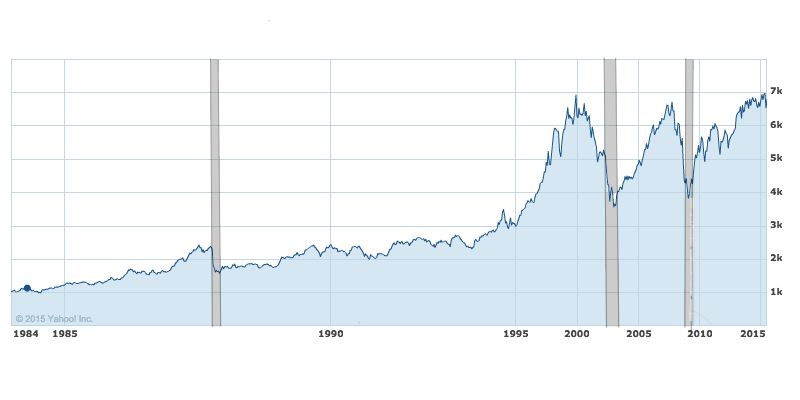
That is what my latest piece of research answered for 80-20 Investor (the DIY Investment service designed to make you a better investor with nothing more than a few minutes a month). The article below showcases part of that research. However if you want to see the full analysis then you can by claiming a FREE trial of 80-20 Investor here.
So what should you do if you are caught by a stock market sell-off? The problem with investment commentators is that they are quick to recite investment mantras and perceived wisdoms. How many times have you heard someone say that you shouldn't panic when markets crash and 'you have to be in it to win it'.
Ask an investment professional to show you the evidence to back their claims and they will clam up. In truth, investment management companies and financial advisers want you to keep your money invested otherwise they don't get paid. Don't forget they get paid by taking a slice (a fee) of your portfolio every month.
How to answer the million dollar question
To begin with you need a huge set of historical data to analyse. The main UK stock market, the FTSE 100, has been around since 3rd January 1984. Since that time there has been an incredible 8,216 trading days. In that time we've had huge rallies (such as the dotcom boom) and crashes (including the financial crisis after Lehman Brothers collapsed as well as Black Monday). We've had wars, political upheaval, recessions and even the birth of home computing and the internet. So as far as data sets go it is pretty robust.
Best and worst ever days for the FTSE 100
After analysing the daily movements in the FTSE 100 for each day over the last 31 years I compiled a list of the 20 best and 20 worst days in terms of performance. Below I've compiled these lists into a single table sorted by date. The 20 worst days are highlighted in red while the best days are highlighted in green. The daily movement of the FTSE 100 for the day in question is shown in the second column.
If you run down the list you should start to notice a trend beginning to emerge. There is a statistically significant correlation between the occurrence of the worst days on the FTSE 100 and the best.
It is not random
Clearly the best and worst days don't happen independently of one another. In fact rather than be spread out across the 31 year timeframe the chart below shows that they are mostly grouped into 3 small windows centred around the biggest market corrections in history. These are shown by the greyed out areas in the chart below and represent 32 of the above dates. Click on the chart to enlarge it
This grouping becomes even more apparent if you extend the analysis to looking at the best 50 days and the worst 50 days for the FTSE 100 Index. So clearly the best and worst days occur near each other. But is there a pattern in the order that they occur which you could exploit?
The answer is yes there is!
So can you time the market?
If you analyse the typical length of time between one of the worst days and a subsequent bounce a pattern emerges which answers when you should sell up and when you should stay in the market. The answer surprised a lot of investors.
To find out what the best strategy simply sign up to 80-20 Investor here for a FREE trial to access the full research. The research also tells you about the 80-20 Investor tool that will help you avoid a market sell-off altogether.
The material in any email, the MonetotheMasses.com website, associated pages / channels / accounts and any other correspondence are for general information only and do not constitute investment, tax, legal or other form of advice. You should not rely on this information to make (or refrain from making) any decisions. Always obtain independent, professional advice for your own particular situation. See full Terms & Conditions and Privacy Policy
Neither MoneytotheMasses.com/80-20 Investor nor its content providers are responsible for any damages or losses arising from any use of this information. Past performance is no guarantee of future results.
Funds invest in shares, bonds, and other financial instruments and are by their nature speculative and can be volatile. You should never invest more than you can safely afford to lose. The value of your investment can go down as well as up so you may get back less than you originally invested.
Information provided by MoneytotheMasses.com/80-20 Investor is for general information only and not intended to be relied upon by readers in making (or not making) specific investment decisions.
Appropriate independent advice should be obtained before making any such decisions. Leadenhall Learning (owner of MoneytotheMasses.com/80-20 Investor) and its staff do not accept liability for any loss suffered by readers as a result of any such decisions.
The tables and graphs are derived from data supplied by Trustnet. All rights Reserved.





